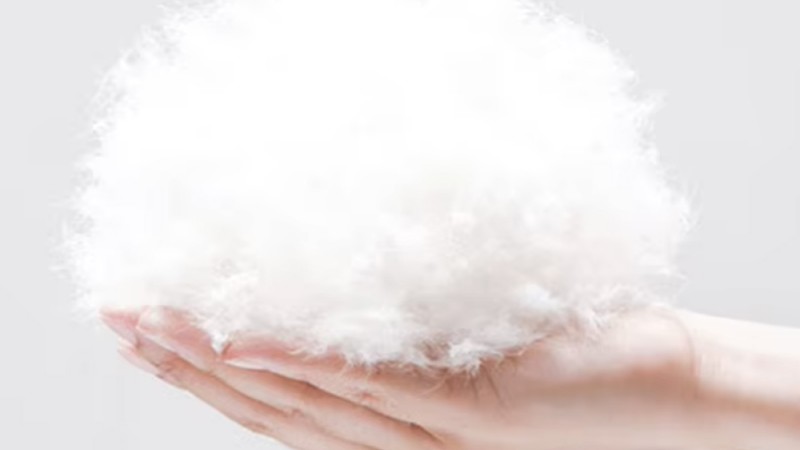
How to Tell the High-Quality Down Feather for a Down Jacket
When shopping for a down jacket, one of the most important factors to consider is the quality of the down feathers used for insulation. The right down can make all the difference in keeping you warm, comfortable, and stylish during the colder months. But with so many options on the market, how can you tell if a down jacket is filled with high-quality down? Here’s a guide to help you understand what makes down feathers high quality and how to choose the best down jacket for your needs.
What is Down?
Down refers to the soft, fluffy feathers found beneath the tougher outer feathers of waterfowl like ducks and geese. Unlike traditional feathers, down is highly effective at trapping air and insulating warmth, making it the ideal material for cold-weather outerwear. High-quality down is light, warm, and durable, which is why it’s commonly used in premium jackets, bedding, and outdoor gear.
Key Factors to Identify High-Quality Down
-
Fill Power: The Indicator of Warmth and Loft Fill power is one of the most important indicators of down quality. It measures the loft or fluffiness of the down, which directly relates to its ability to trap warmth. The higher the fill power, the better the insulation. Here’s a breakdown of what different fill power ratings mean:
- 600-650 Fill Power: Average insulation, suitable for mild winter climates.
- 650-750 Fill Power: Excellent warmth-to-weight ratio, ideal for cold winters or outdoor activities.
- 750-800 Fill Power: Premium insulation, often used in high-end, performance-oriented jackets.
- 800+ Fill Power: Ultra-high-quality down with exceptional warmth, used in top-tier jackets for extreme cold weather.
Generally, the higher the fill power, the warmer and lighter the jacket will be, meaning you'll need fewer feathers to provide the same level of insulation.
-
Down-to-Feather Ratio In addition to fill power, the down-to-feather ratio determines the quality of the down. Down feathers are soft, lightweight, and insulating, while regular feathers are heavier and less effective at trapping warmth. Jackets with a higher percentage of down (compared to feathers) will provide better insulation and a lighter feel. Look for a down jacket with a ratio of at least 80% down and 20% feathers for optimal warmth and comfort.
-
Source of the Down: Duck vs. Goose Down comes from both ducks and geese, with goose down typically being of higher quality. This is because geese have larger and fluffier down clusters compared to ducks, which provide superior insulation. Goose down is generally lighter and warmer, but it also tends to be more expensive.
However, duck down can still be of high quality, especially if it’s sourced from reputable, responsible suppliers. The key is to check for reputable sourcing and ethical practices when purchasing a down jacket.
-
Down Fill Treatment: Water-Resistant Down One common concern with down is its ability to absorb moisture, which can reduce its insulating properties. High-quality down often undergoes a special water-repellent treatment to help it retain its loft and warmth even in damp conditions. Water-resistant down or hydrophobic down is treated with a coating that allows it to repel moisture, making it a great choice for outdoor activities and wet climates.
Jackets with water-resistant down are ideal for winter activities like hiking, skiing, and snowboarding, where exposure to snow and moisture is common.
-
Certification and Ethical Sourcing High-quality down should come from reputable sources that adhere to ethical practices. Look for certifications like the Responsible Down Standard (RDS) or Global Traceable Down Standard (GTDS), which ensure that the down is ethically sourced, cruelty-free, and traceable from farm to final product. These certifications provide peace of mind that the down used in your jacket comes from birds that have been treated humanely.
How to Test the Quality of Down
While it's difficult to physically test the down inside a jacket without cutting it open, there are a few tricks to assess the quality of down before purchase:
-
Feel the Jacket: High-quality down jackets feel lightweight yet warm when worn. They should have a soft, airy feel, and the insulation should not feel heavy or lumpy.
-
Look at the Fill Power: Check the product label or description for fill power ratings. The higher the fill power, the better the quality of the down.
-
Inspect the Loft: A jacket filled with high-quality down will have a noticeable loft (fluffiness) when you press it. The down should puff back into shape once squeezed.
-
Check for Certifications: Always look for trusted certifications that ensure ethical sourcing and high standards of down quality.
Conclusion
Investing in a high-quality down jacket can make all the difference in your winter comfort. By paying attention to the fill power, down-to-feather ratio, source of the down, and water-resistant treatments, you can ensure that you’re getting the best insulation for your needs. Whether you're heading out on a cold-weather adventure or just looking for everyday warmth, knowing how to identify quality down will help you make the right choice.
When shopping for a down jacket, don’t just focus on price—focus on quality. With the right high-quality down jacket, you'll stay warm and comfortable no matter how low the temperatures drop.
This blog post should give readers a comprehensive understanding of how to evaluate the quality of down feathers and make an informed decision when purchasing a down jacket!




Leave a comment